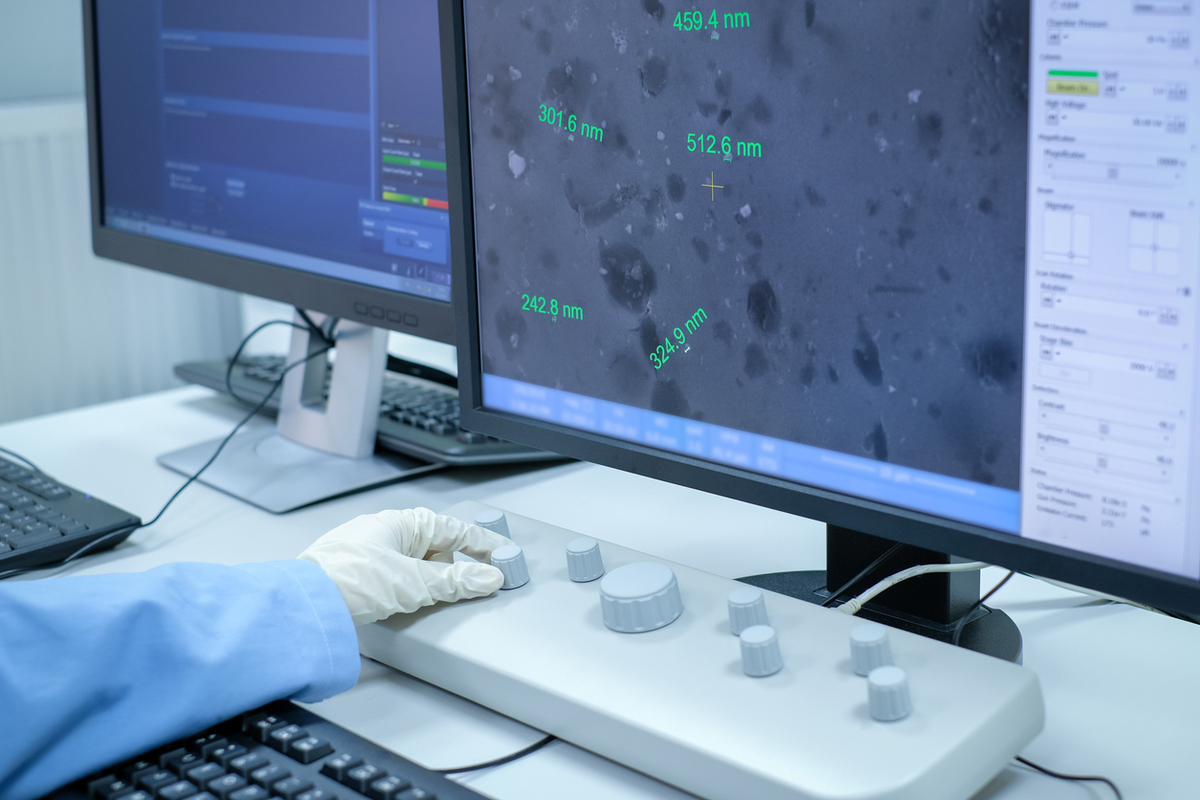New and emerging materials: driving innovation across business

In the ever-evolving landscape of industry, materials play a pivotal role in shaping the future of technology, manufacturing and sustainability. New and emerging materials such as advanced composites, nanomaterials and smart materials are at the forefront of this transformation.
Some new materials simply do things better: they are lighter or stronger, for instance. Others, so-called metamaterials, can have “unnatural” properties, such as the ability to manipulate sound, light, radar waves and even vibrations in ways not possible with natural materials. They have a range of applications including weaponry, vibration damping, seismic protection and the creation of optical illusions.
Together, these emerging materials are revolutionising sectors as diverse as aerospace and automotive, logistics and packaging (which we wrote about this earlier this year) as well as healthcare, clothing and construction.
Composites: the strength of synergy
Composites, formed by combining two or more distinct materials, bring together the best properties of their constituent parts to create an enhanced product – for example, glass fibre-reinforced polymers (GFRP), which combine high strength with low weight. These materials are a game-changer in industries such as aerospace and automotive, where reducing weight without sacrificing strength is critical.
The significance of composites extends beyond weight reduction. In wind energy, for example, composite materials are used to manufacture longer, lighter and more durable turbine blades, which can operate more efficiently. In civil engineering, composites provide corrosion resistance and high tensile strength for reinforcing structures, extending their lifespan and reducing repair costs. Ceramic matrix composites (CMCs) are used to produce components that can withstand extreme temperatures and mechanical stresses in jet engines and gas turbines. And Kevlar, or aramid, fibres, used in personal protective equipment such as helmets, gloves and body armour, offer lightweight resistance to cuts and impacts, making them essential for protecting workers in hazardous environments.
As industries strive for greater sustainability, composites become even more important. Innovations such as bio-composites, which combine natural fibres and biodegradable resins, are emerging as greener alternatives to traditional composites, potentially reducing the environmental impact of several industries.
Nanomaterials: tiny particles, big impact
Nanomaterials are defined by their extremely small size (typically between 1 and 100 nanometres: 1nm is one millionth of a millimetre, about 100,000 times smaller than the diameter of a human hair). They possess properties that differ significantly from their bulkier counterparts such as enhanced mechanical strength and superior electrical, thermal and optical properties.
In the medical sector, for instance, nanomaterials enable advanced drug delivery systems where treatments can be delivered directly to individual cancer cells, minimising damage to healthy tissue. In electronics, nanomaterials such as graphene (a single layer of carbon atoms) are paving the way for the next generation of high-speed, energy-efficient semiconductors, sensors and batteries, while nano-coatings can enhance barrier functions (against gases, moisture and UV light for example).
Like composites, nanomaterials are also contributing to environmental sustainability, improving the efficiency of chemical reactions, decreasing energy consumption and facilitating self-cleaning surfaces which conserve water and reduce the need for chemical cleaning agents.
Smart materials: responsive designs
Smart materials respond dynamically to environmental stimuli such as temperature, pressure, light and electrical charges, enabling the development of responsive and adaptive systems.
In architecture and the automotive industry, the use of thermochromic materials that change colour in response to external heat can help regulate building or car interior temperatures, reducing energy consumption for heating and cooling. In a similar way, phase-change materials in fabrics can absorb, store and release heat to regulate temperature, making them ideal for clothing used in extreme environments. And in healthcare, smart materials are used for implants and wearable devices that adapt to the body’s conditions, such as temperature-sensitive gels that release medication in response to a fever.
Even more excitingly, piezoelectric materials, which generate electricity when subjected to mechanical stress, may be used to harvest energy and could for example capture the energy generated from road traffic to power streetlights.
Self-healing materials are also responsive in that they are designed to repair damage automatically, extending the lifespan of products, something that is particularly valuable where maintenance is dangerous, difficult or costly.
In the construction industry, self-healing concrete addresses the problem of cracks that lead to structural failures. This pioneering material contains capsules of healing agents that are activated when cracks form, filling the gaps and restoring structural integrity. Similarly, in the automotive and aerospace sectors, self-healing polymers can enhance the longevity of components, reducing the frequency of repairs and replacements, while in consumer electronics, self-healing materials add durability to screens and casings, providing longer-lasting products and reducing electronic waste.
Antimicrobials: fighting infections, enhancing safety
The 2020 pandemic proved the importance of hygiene and infection, and antimicrobial materials are emerging as a key solution. These materials are engineered to prevent the growth of harmful microorganisms such as bacteria, viruses and fungi on surfaces, significantly reducing the risk of disease transmission.
Applications in healthcare settings are to be expected, as antimicrobial materials can be integrated into surfaces, furniture and medical devices such as catheters and surgical instruments. But beyond healthcare, antimicrobial materials have applications in the food industry, where maintaining cleanliness is paramount: packaging materials and food processing equipment treated with antimicrobial coatings help extend shelf life. And in public transport, antimicrobial coatings on handrails, seats and other frequently touched surfaces can reduce the spread of germs, enhancing public health.
A materials revolution
The development of these new and exciting new materials is not just about enhancing performance. It is also about driving innovation towards a more sustainable, efficient and safer future. As these, and other, materials are further developed, their applications will expand, providing new opportunities across industry to reduce costs, improve performance and address challenges such as climate change, resource scarcity and public health.
For companies looking to enhance their competitiveness, an understanding of these advanced materials is not just an option, it is an imperative. As the materials revolution gains momentum, the possibilities for innovation are boundless: we are just at the start of this transformative journey.

Jeremy Swinfen-Green
Most Viewed
23-29 Hendon Lane, London, N3 1RT
23-29 Hendon Lane, London, N3 1RT
020 8349 4363
© 2024, Lyonsdown Limited. Business Reporter® is a registered trademark of Lyonsdown Ltd. VAT registration number: 830519543





